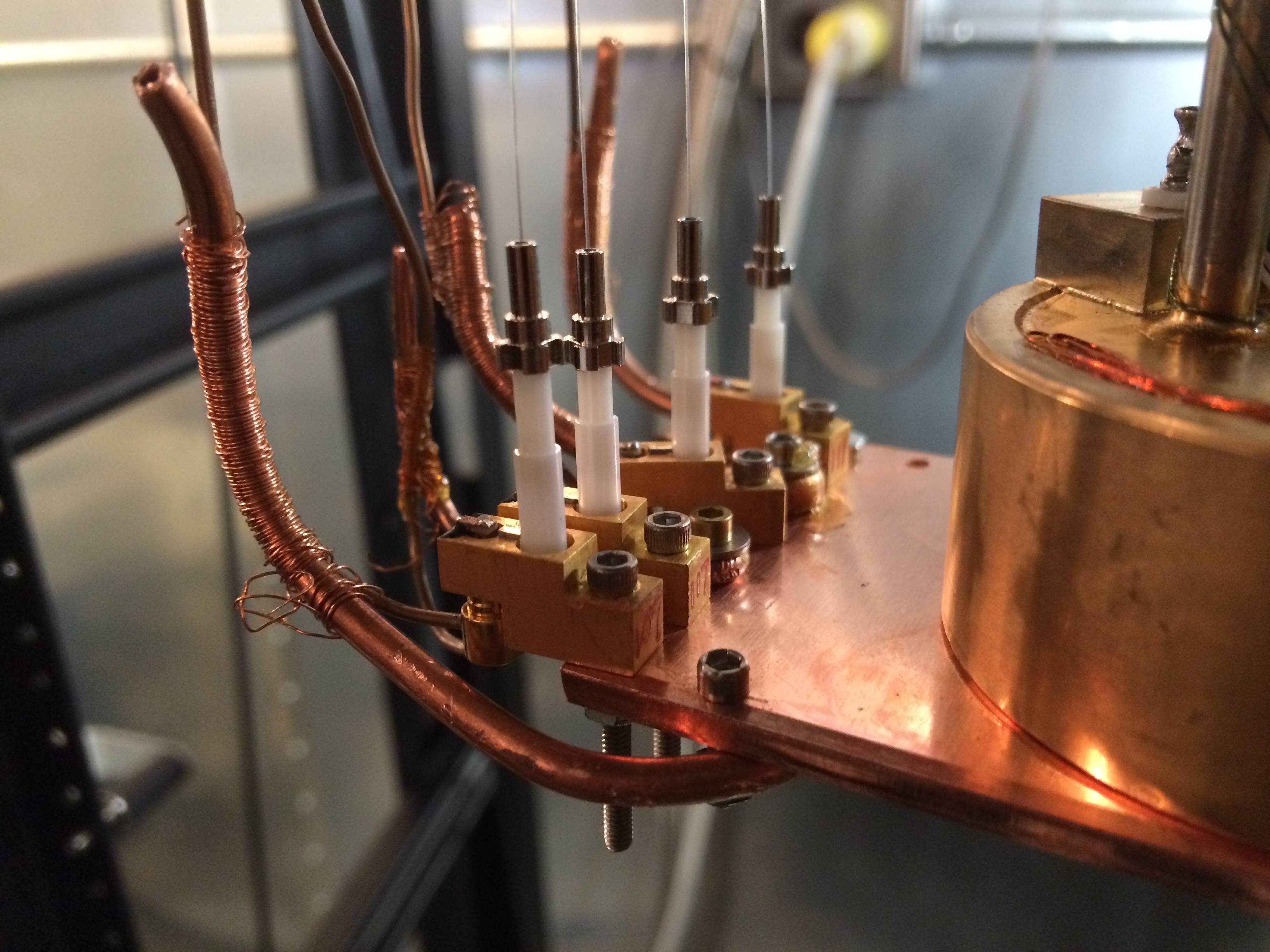In the realm of quantum mechanics some very interesting phenomena are permitted such as superposition, entanglement, and even quantum teleportation. While the term “quantum teleportation” may sound like something from a sci-fi novel, this is a process can actually be implemented in the lab. Consider Alice and Bob have two quantum systems, such as a trapped ion or a photon, and Alice wants to imprint the state of her system on to Bob’s system. Quantum teleportation describes a mechanism where Alice’s state can be transmitted to Bob’s by using two entangled quantum bits (qubits) as a resource. When Alice and Bob both measure their qubit entanglement enables the quantum state to be moved from Alice to Bob without any knowledge about the state. This is important because any knowledge about the state would collapse the wavefunction and destroy any coherence.
Experimentally, extensive resources are required to teleport an arbitrary quantum state. However, a deterministic (as opposed to probabilistic) protocol called Superdense Quantum Teleportation can send a particular set of quantum states using hyperentangled qubits. These are qubits that are entangled in more than one basis. In our case these are entangled photon pairs from a spontaneous down conversion (SPDC) source. Paul Kwiat’s lab at Illinois has just recently demonstrated a high fidelity of 87% for teleportation [1].
We would like to demonstrate and establish a quantum communication link that allows for superdense teleportation between the International Space Station and Earth. This necessitates the development of efficient and fast single photon detection systems for both nodes of this communication link. At Duke, in conjunction with the Jet Propulsion Laboratory at Caltech, we are testing and developing a detection system based on superconducting nanowire single photon detectors (SNSPDs). These detectors have been shown to be highly efficient with very low dark counts and very high timing resolution [2]. We are currently working to improve the readout electronics of this system by building and testing our own cryogenic readout systems.

[1] - Graham, Trent M., et al. "Superdense teleportation using hyperentangled photons." Nature Communications 6 (2015).
[2] - Dauler, Eric A., et al. "Review of superconducting nanowire single-photon detector system design options and demonstrated performance." Opt. Eng 53.8 (2014): 081907.